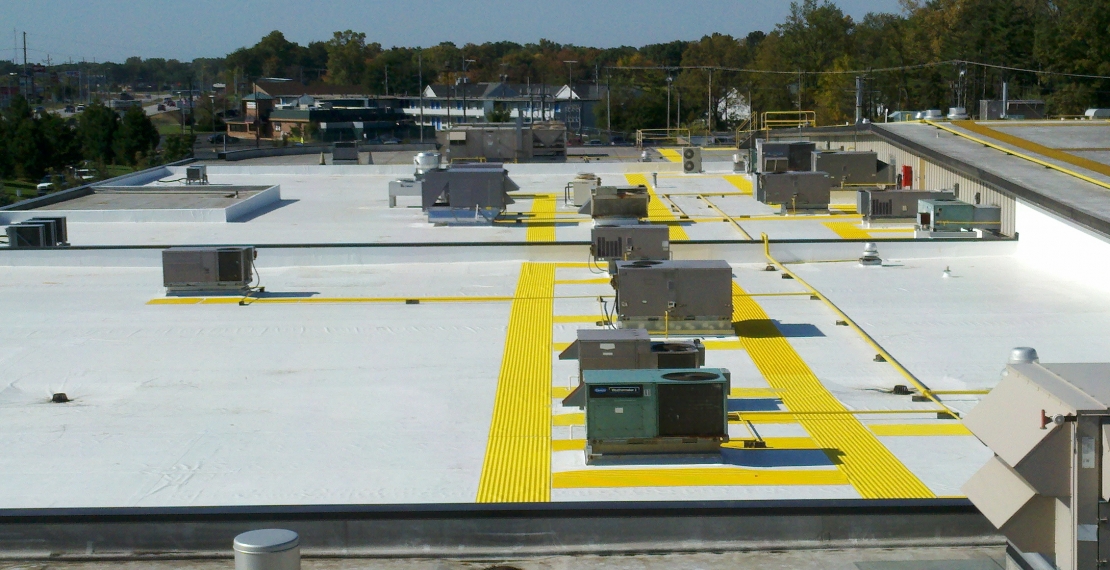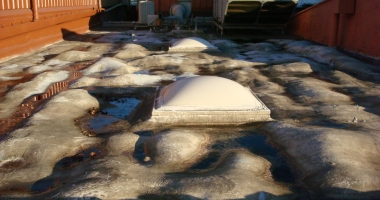Roof Inspection FAQs

Why?
Would you buy a new car and drive it for 100,000 miles without ever having the engine inspected by a mechanic? Of course not! Would you leave a new roofing system to brave extreme weather and abuse without ever having it inspected by a qualified roofing professional? Surprisingly enough, many people do.
The roof is the most vulnerable part of a building-and the part that is most often neglected. That is the reason why serious and expensive damage so often occurs in roofs that are not regularly inspected.
Roofs are vulnerable because they are subject to damage from harsh weather, foot traffic, abuse and even vandalism. If your roof is inspected regularly by a qualified roofing professional, you can rest assured that any damage to your roofing system will be quickly discovered. By having minor problems taken care of early by a roofing professional, you can prevent deterioration of your roof system which often requires costly repairs.
When?
Roofs should be inspected twice yearly by a qualified professional. A spring inspection can uncover damage that occurred during the winter, and a fall inspection will tell you if your roof is ready to withstand the winter months.
Your roof's very first inspection is an important one, as it frequently uncovers minor defects that were not apparent when the roof was initially completed. When you have your roof inspected for the first time, make sure you keep roof inspection records which contain the description, age and condition of all roof areas. Photographs are also helpful. Be sure to include roof inspection records as a part of the structure's historical records.
In addition to regularly scheduled semi-annual inspections, your roof should be professionally inspected at the following times:
- After exposure to severe weather conditions such as strong winds, hail, snow or long and heavy rain.
- Before and after the maintenance, repair or installation of parapets, chimneys, signs or rooftop equipment (such as air conditioners, antennas or vents), and at other times when the roof is altered or may have been damaged by workers or roof traffic.
- If your building houses manufacturing facilities that evacuate excessive exhaust, debris or grease onto the roof, it should be inspected frequently.
What a Roofing Professional Looks For
 Your roofing professional will examine the underside of your roof deck for evidence of leaks, deteriorated decking, structural cracks, structural movement and other defects. A professional will also carefully examine the walls and parapets to detect evidence of cracking, deterioration and water entry.
Your roofing professional will examine the underside of your roof deck for evidence of leaks, deteriorated decking, structural cracks, structural movement and other defects. A professional will also carefully examine the walls and parapets to detect evidence of cracking, deterioration and water entry.
In addition, roofing professionals will know it is important to check flashings, the areas where the edges of your roof's waterproofing layer are sealed together. When leaks in a structure are detected, flashing areas, edges and drains are often the first places your roofing professional will examine. These places are the source of problems which are often mistakenly attributed to other areas.
 Roofing professionals are also careful to remove all plant growth and repair all areas where roots have penetrated the roof membrane. Other things roofing experts look for are punctures, broken laps or seams in roofing membranes, separations from vertical surfaces and signs of weather deterioration.
Roofing professionals are also careful to remove all plant growth and repair all areas where roots have penetrated the roof membrane. Other things roofing experts look for are punctures, broken laps or seams in roofing membranes, separations from vertical surfaces and signs of weather deterioration.
Flashings that continually face the sun are particularly prone to premature deterioration.
Clearly, there are a number of ways a roof may become damaged if not properly inspected and maintained. One of the worst culprits is water.
What Ponded Water Can Do To My Roof and How a Roofing Professional Can Help
Roofs should be designed to shed water, not hold it. When water ponds on a roof, it finds its way to the smallest opening and works to accelerate the aging process of the roof system. Your roofing professional can prevent this from happening by:
- Checking the roof deck slope to make sure it is properly designed, unobstructed and permits free drainage without sags or depressions.
- Checking gutters and drains to make sure they are not clogged with debris, such as leaves, twigs, cans, balls, etc. A roofing professional will also look for defective drain flashings and check to see that the roof membrane is securely clamped within the drain clamping ring.
- Checking for standing water around drains, which may indicate that the drain is set too high or is situated in the wrong location.
- Verifying that gutters have the proper downward slope.
No matter how well designed and applied your roofing system, you can't expect it to reach its full-life expectancy without regular inspections. With the help of a qualified roofing professional, you can add years of trouble-free service to your roof, save money, and improve the overall value of your building.

